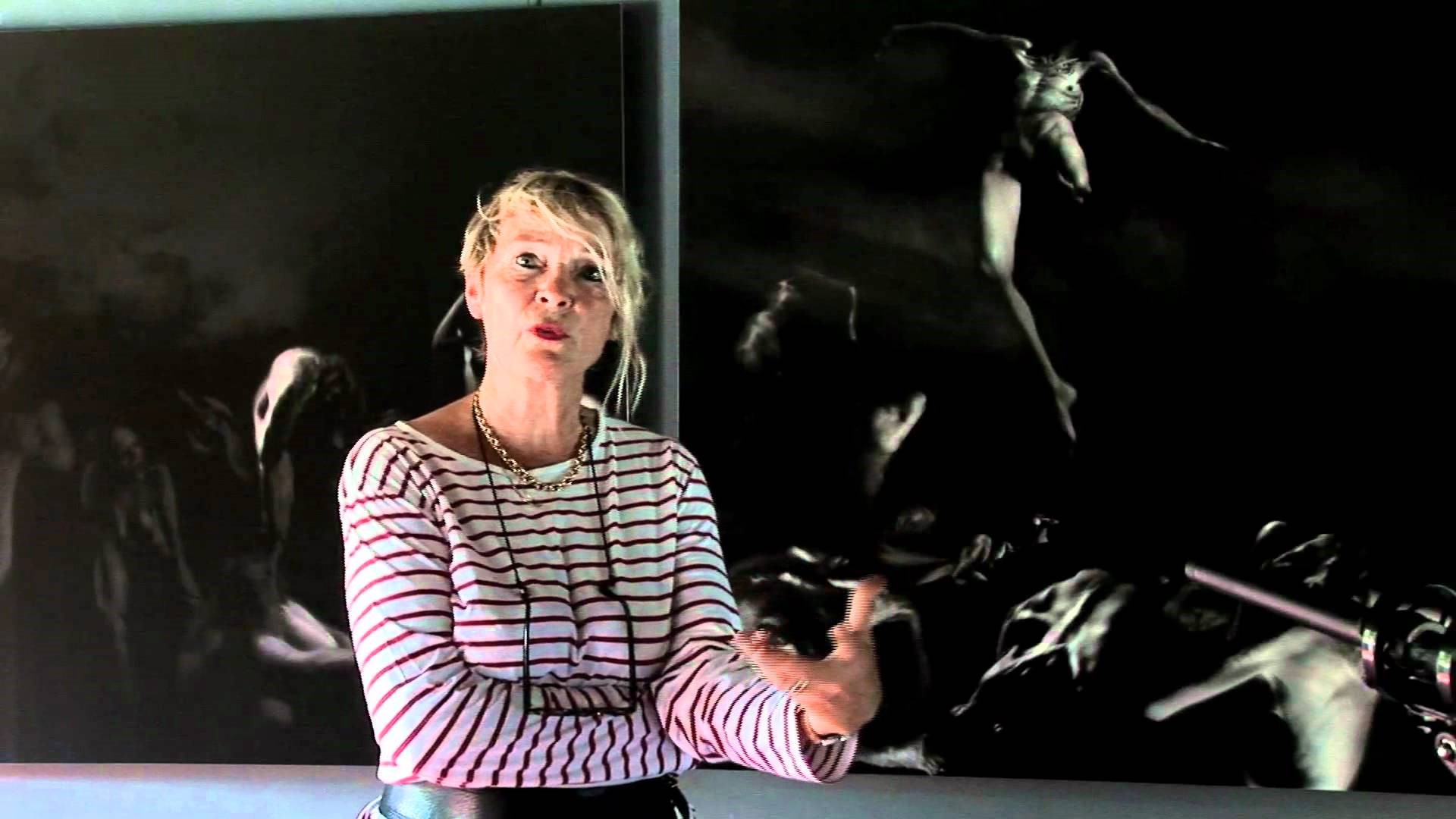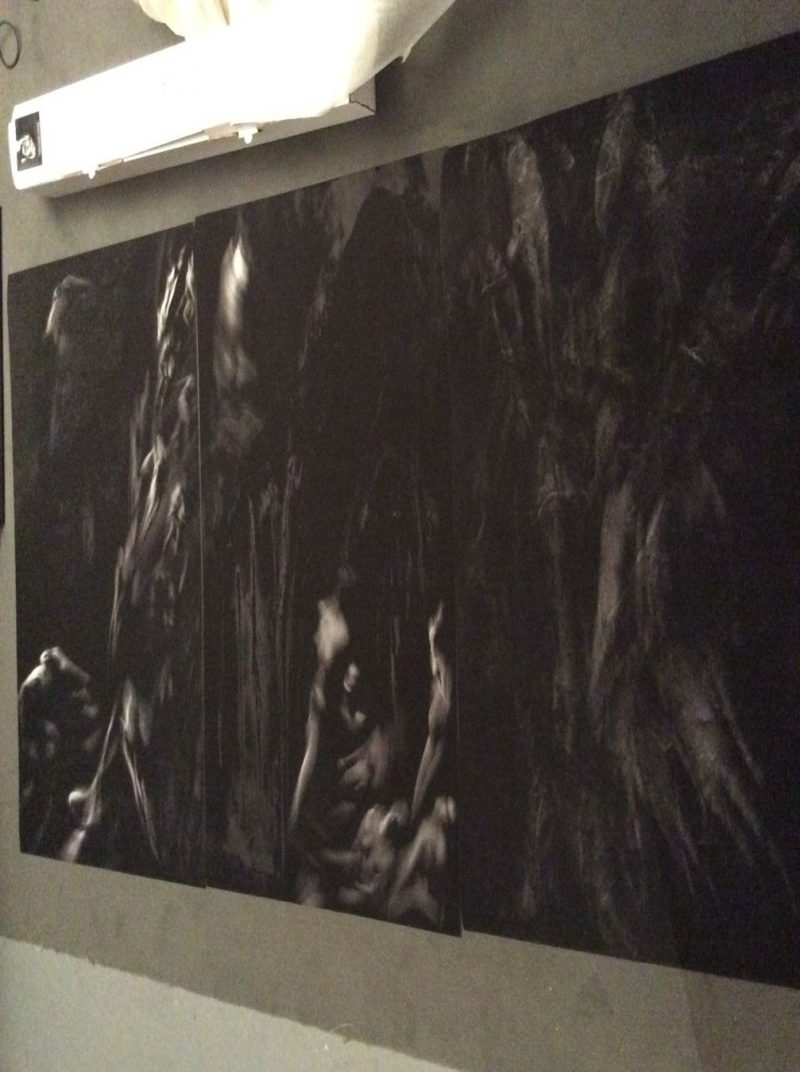Elizabeth Prouvost:
Before the light – Mixed up confusion
Elizabeth Prouvost, Claude Louis Combet, “Born from the Limon”, Fata Morgana, Fontfroide the High, 2018.
(Elizabeth Prouvost, Claude Louis Combet, “Né du limon”, Fata Morgana, Fontfroide le Haut, 2018)
Elizabeth Prouvost, « Ce que nous voyons, ce qui nous regarde », Service des soins palliatifs, C.H de Troyes, du 18 janvier au 18 mars 2018.
(Elizabeth Prouvost, “What we see, what we are looking at”, Palliative Care Service, C.H Troyes, from January 18 to March 18, 2018)
The birth of sex: Elizabeth Prouvost and Claude Louis-Combet
The power that Elizabeth Prouvost gives to the shadows of the body at first sight creates vertigo. The eye follows what is traced, rubs itself with the material, is frightened by the darkness of the shadow, tries to fraternize with the light, enjoys the strength of the dark, collides with the full, plunges into the empty. Everything is done to bring back something primitive and winged. We return to the exit (or entry) of what was fomented during the “sexual night” — the first night of the design of the one who will always ignore everything.
“It’s the birth of sex. It’s the beginning of history,” writes Louis-Combet. Elizabeth Prouvost imagines this indomitable, this first night, this supreme fall that the being will try to resurrect, to find through all the women whom he’s left, conceived less than created. That is why such photos as Duras would be “sublime, necessarily sublime.” They make us feel by the black and white, stopping movement, nevertheless extending the sweetness of the moment, the violence, the telluric heat and moisture that desire creates. The clay of the woman is not distinguished from the clay of the man in the midst of a confusion organized in a choreography of plenitude.
— Jean-Paul Gavard-Perret
Elizabeth Prouvost : avant la lumière ou la naissance du sexe
La naissance du sexe : Elizabeth Prouvost et Claude Louis-Combet
Le pouvoir qu’Elizabeth Prouvost accorde aux ombres des corps impose un vertige premier. L’œil suit ce qui est tracé, se frotte à la matière, s’effraie de la noirceur de l’ombre, tente de fraterniser avec la lumière, jouit de la force de l’obscur, se heurte aux pleins, plonge dans les vides. Tout est fait pour ramener à quelque chose de primitif et d’ailé. Nous revenons à la sortie (ou de l’entrée) de ce qui se fomenta lors de « la nuit sexuelle » – nuit première de la conception de celui qui toujours en ignorera tout.
« C’est la naissance du sexe. C’est le commencement de l’histoire » écrit Louis-Combet. Elizabeth Prouvost imagine cet indomptable, cette nuit première cette chute suprême que l’être va tenter de remonter pour retrouver à travers toutes les femmes celles dont il est sorti, conçu moins que créé. Et c’est pourquoi de telles photos comme l’aurait Duras sont « sublimes forcément sublimes» Elles font ressentir par le noir et blanc, et l’arrêt sur le mouvement qui semble néanmoins s’y prolonger la douceur, la violence, la chaleur tellurique et l’humidité que le désir crée. L’argile de la femme ne se distingue pas de celle de l’homme au sein d’une confusion organisée en chorégraphie de la plénitude.
— Jean-Paul Gavard-Perret
About the author:
 Jean-Paul Gavard Perret is a contributing editor to Ragazine.CC of On Location/France. You can read more about him in About Us.
Jean-Paul Gavard Perret is a contributing editor to Ragazine.CC of On Location/France. You can read more about him in About Us.


Recent Comments